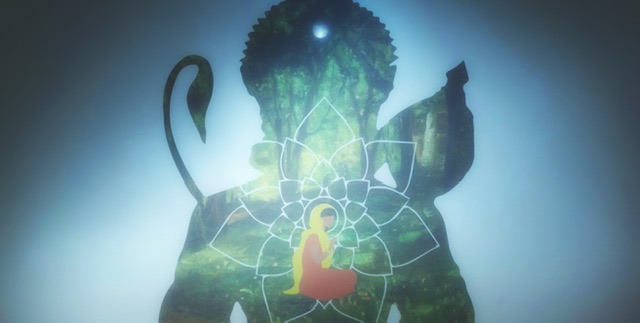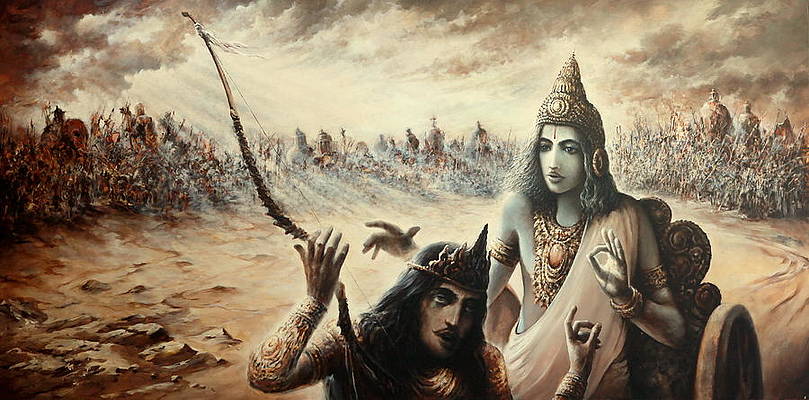Macaulay in his infamous ‘Minute’ in 1835 changed the course of how Bharat (or India as we call it now) would be perceived by its countrymen. He planned to uproot the Indian culture through English education. He advocated education for a selected class and wanted to create eminent clerks to serve the lower cadres in British administration, “Brown Englishmen”.
The fact that that most of us find it perfectly normal to address him, who ravaged our culture, as “Lord” Macaulay and find the idea of cow, which nourishes us, being our mother or goddess absurd, is a direct indicator…Macaulay succeeded in brainwashing us. A brainwash to the extent, that no matter what we write here or whatever stats we share, the Brown Englishmen, even if they make it through the end of this article, would still not find anything wrong in killing cows or eating beef in India, the fact that it is illegal to slaughter cows in 24 of 28 states in independent India notwithstanding.
Cow has been a symbol of abundance and prosperity since time immemorial. The archaeological excavations in Harappa – Mohenjodaro have revealed seals and figurines of bulls and cows. Atharvaveda calls the cow as ‘dhenu’, the house of all bounties (Dhenu sadanam rayeenaam – Atharvaveda 11.1.34). The 28th Sukta of 6th Mandal of Rigved directs everyone to ensure that cows are free from miseries and kept healthy. God blesses those who take care of cows. Cow brings prosperity and strength, if cows keep healthy and happy, men and women shall also keep disease free and prosperous. In fact cow is called ‘aditi’ in Rigved, one which ought not to be cut into pieces (Maa gaamanaagaamaditim vadhishta – Rigveda 8.101.15) and cow slaughter is called a crime as heinous as human murder (Aare gohaa nrhaa vadho vo astu – Rigveda 7.56.17).
Lord Nandi, the bull, was the favorite of Lord Shiv. Lord Parshuram waged a war against Sahastra Arjun when he took away the calf of Kamdhenu cow which belonged to his father. King Prithu, after whom earth is called ‘prithvi’, milked a cow, which is the embodiment of earth, to end the famine on the planet and save humanity. Lord Krishna was a Gopal, cow herder. Arjun thought it worthy to risk another 14 years of exile in order to protect the cattle in Viratnagar war. King Nahush had to reimburse the fishermen with a prize equivalent to life of Rishi Chyawan, he did so by gifting them a cow. Chola King Manu Needhi Cholan killed his son Veedhividangan to provide justice to a cow whose calf was killed under the wheels of his son’s chariot.
After 1000AD, there was an advent of Islamic rulers to India. They too, were not habituated to eating beef, as there were no cows in Arab countries. Sheep, goats and camels were parts of their ritual sacrifice as per islamic tradition. However, coming to India, some of them started sacrificing cows. This was not a religious dictate, as others (and the more influential ones), like Humayun did not eat beef and issued a farman against cow slaughter. Later Mughal emperors – Akbar (1556 – 1605), Jahangir (1605 – 1627), and Ahmad Shah (1748 – 1754) also imposed restricted bans on cow slaughter. In fact, noted Hadith scholar Ghazali in his Ihya-ulum-ud-din observes that beef creates disease, milk is cure and clarified butter has medicinal properties.
In 1580, Ralph Fitch, an English traveler wrote while describing India in a letter, they worship cows, paint walls with cow dung and don’t eat flesh. That was the tradition in India. When Afghan plunderer Ahmad Shah Durrani (1756-57), in an act of hostility filled the sacred pool of Golden Temple with blood of slaughtered cows, the act was condemned throughout the length and breadth of the country.
Every Indian ruler and citizen, irrespective of faith, opposed this butchering of cows. Sultan of Mysore, Hyder Ali (1761-82), made cow slaughter an offence punishable with the cutting of the hands of the offenders. In early 19th century, Ranjit Singh, the founder of Sikh empire banned cow slaughter throughout his domain. The last Mughal emperor Bahadur Shah Zafar in 1857, banned cow slaughter, forbade the eating of beef and announced the punishment of being blown by canon for anyone killing a cow. The Marathas, who were known for being inclusive and tolerant towards all faiths took extensive steps to inhibit cattle slaughter and dealt severely (even executed in many cases) those who killed cattle. They even set up blockades around Bassein (now Vasai, Maharashtra) in the late 1790s to prevent cow carcasses from being smuggled to butchers in Bombay and Salsette.
ALAS! THE BRITISHERS PUNCTURED OUR ROOTS, KILLED COWS & POISONED OUR MINDS
The first slaughterhouse in India was built in Calcutta (now Kolkata) in 1760 by Robert Clive, then Governor of Bengal. It could kill 30,000 animals per day. Several more slaughterhouses were set up in various parts of the country by the Commissariat Wing of the three British armies of Bengal, Madras and Bombay Presidencies. 350 slaughterhouses were constructed by 1910. The Britishers were habituated to eating beef and saw in the practice, the opportunity to break India.
Hindus and Muslims who unanimously preserved cattle before the advent of British rule and who even fought the first war of Indian Independence, the Revolt of 1857, shoulder-to-shoulder against the British Rule when they were made to lick cartridges smeared in cow fat…were through calculated conspiracies by Britishers pitted against each other. Muslims were given employment in the butcher houses run by British Government and gradually led to believe that it was their religious right to eat cows (whereas no such precedence exists in history).
Further blow came with the introduction of English Education, which created Brown Englishmen, who looked down upon India’s culture and sciences and were trained to not think. British left, but the minds of Indians were colonized forever. India which put forth capital punishment for slaughter of cows, now was debating whether or not to ban cow slaughter in Independent India. Because, Indian think-tank was alienated from its own sciences which explained the importance of protecting cows and how killing the cow is directly linked to ill-health, financial troubles and premature death. So blind was the Brown Englishman that he could not see that in 1760, the first slaughterhouse was set-up in Bengal and 7-8 years down the line, the earlier rich & abundant Bengal witnessed the worst famines through history where millions of people were killed. Robert Clive became an opium addict and later committed suicide by stabbing himself with a pen knife after being unable to withstand the pain caused by the illness that had resulted from opium addiction. The Vedas and Puranas, which taught the likes of Pythagoras and Oppenheimer, which said that rivers of milk flowed in nations that are prosperous and rivers of blood in those that meet their downfall, were considered redundant by the English-educated Indian.
The blindness is chronic, as India continues to kill cows, smuggle them and savor beef, thinking there is nothing wrong with it. To the blind fellow Indians – just check the quality of air, food, water and land in our country, the rate of crime and the health of animals, the rise in disease, poverty and suffering – if you can say it is better than what it was 300 years back, I would understand you are right in your thinking. If not, maybe it’s time to shed-off the colonial mindset.





